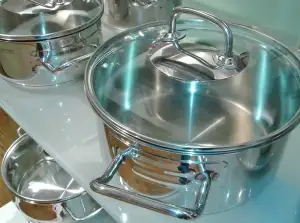Seal the Hole: Simple and Effective Ways to Fix Holes in Your Home

Welcome to "Seal the Hole," a comprehensive guide to fixing holes in your home. Whether you're a seasoned DIY enthusiast or a beginner, this article will provide you with simple and effective ways to tackle those pesky holes that can compromise the aesthetics and functionality of your living space. From small nail holes to larger cracks, we'll explore the various types of holes commonly found in homes and equip you with the necessary tools and materials to get the job done right. So let's dive in and learn how to seal those holes like a pro!
Importance of Fixing Holes in the Home
The importance of fixing holes in the home cannot be overstated. Holes not only compromise the structural integrity of your house, but they also pose various risks to your health and safety. Unsealed holes can allow pests like rodents and insects to enter your home, leading to potential infestations. Additionally, holes can create drafts, resulting in energy loss and increased utility bills. Furthermore, uncovered holes provide easy access for moisture, which can lead to mold growth and damage to your walls or ceilings. It is crucial to address these issues promptly to maintain a safe and comfortable living environment.
Common Types of Holes in the Home
Holes in the home can be a nuisance and can lead to various problems if left unattended. Here are some common types of holes that homeowners may encounter:
1. Nail Holes: These small holes are often found on walls where pictures or shelves were previously hung. They are usually easy to fix and require minimal effort.
2. Screw Holes: Similar to nail holes, screw holes are created when screws are removed from walls or furniture. These holes can be easily fixed using simple techniques.
3. Drywall Holes: Accidents happen, and sometimes larger holes may appear in drywall due to furniture bumps or other mishaps. These holes may require more extensive repairs but can still be fixed with the right tools and materials.
4. Plumbing Holes: When pipes are installed or repaired, small access holes may be created in walls or ceilings. It is important to seal these holes properly to prevent water damage or potential pest infestations.
5. Electrical Holes: Electricians often create small openings in walls for wiring purposes. These holes should be sealed correctly to maintain safety standards and prevent any unwanted pests from entering the home.
By identifying the type of hole you have, you can determine the appropriate method for sealing it effectively and efficiently. Remember, addressing these issues promptly will help maintain the integrity and appearance of your home while preventing further damage down the line.
Tools and Materials Required for Sealing Holes
When it comes to sealing holes in your home, having the right tools and materials is crucial for a successful repair. Here are some essential items you will need:
1. Patching compound: This is a paste-like substance that is used to fill in the hole and create a smooth surface. It can be purchased at any hardware store and comes in different types, such as spackling compound or joint compound.
2. Putty knife: A putty knife is necessary for applying the patching compound to the hole. It has a flat, flexible blade that allows for easy spreading and smoothing of the compound.
3. Sandpaper: After applying the patching compound, sandpaper is used to smooth out any rough edges or uneven surfaces. Choose a fine-grit sandpaper for this task.
4. Paint: Once the hole has been sealed and sanded, you may need to paint over it to match the surrounding wall or surface. Make sure to choose a paint color that matches your existing paintwork.
5. Paintbrush or roller: Depending on the size of the area you need to paint, you will require either a paintbrush or roller for an even application of paint.
6. Drop cloth or plastic sheet: To protect your floor or furniture from any potential mess during the repair process, lay down a drop cloth or plastic sheet.
7. Safety equipment: It's important to prioritize safety while working on home repairs. Wear protective goggles, gloves, and a dust mask when handling patching compounds or sanding materials.
By having these tools and materials ready before starting your hole sealing project, you'll be well-prepared for a successful repair job.
Step-by-Step Guide to Seal a Hole in the Home
1. Assess the size and type of hole: Determine whether it is a small nail hole, a larger hole from a doorknob, or a hole caused by pests.
2. Gather the necessary tools and materials: You will need spackling paste or putty, a putty knife, sandpaper, primer, and paint that matches your wall color.
3. Prepare the hole: Clean the area around the hole using a damp cloth to remove any dirt or debris. For larger holes, use a utility knife to create clean edges.
4. Apply spackling paste or putty: Use the putty knife to fill the hole with spackling paste or putty. Press firmly to ensure it fills the entire hole.
5. Smooth and level: Use the putty knife to smooth out the surface of the spackling paste or putty until it is level with the wall. Remove any excess material.
6. Let it dry: Follow the instructions on your chosen product for drying time. It typically takes a few hours for smaller holes and longer for larger ones.
7. Sand and prime: Once dry, use sandpaper to gently smooth out any rough edges or bumps. Wipe away any dust and apply primer to ensure an even finish.
8. Paint over the repaired area: Finally, paint over the repaired area using paint that matches your wall color. Apply multiple coats if necessary for seamless blending.
By following these simple steps, you can effectively seal holes in your home and restore its appearance without professional help. Remember, proper sealing not only enhances aesthetics but also prevents further damage and maintains structural integrity.
Tips and Tricks for Effective Hole Sealing
1. Clean the area: Before sealing a hole, make sure to clean the surrounding area thoroughly. Remove any loose debris, dust, or dirt using a brush or vacuum cleaner. This will ensure proper adhesion of the sealing material.
2. Choose the right material: Depending on the size and type of hole, select the appropriate sealing material. For small holes, such as nail holes or cracks, spackling paste or putty can be used. For larger holes, consider using drywall patches or mesh tape combined with joint compound.
3. Apply multiple layers: When filling a hole, it is often more effective to apply multiple thin layers of sealing material rather than one thick layer. Allow each layer to dry completely before applying the next one. This helps prevent cracking and ensures a smooth finish.
4. Sand and smoothen: Once the sealing material has dried completely, use sandpaper to smoothen the patched area. Start with coarse-grit sandpaper and gradually switch to finer grits for a polished finish. Wipe away any dust before proceeding.
5. Prime and paint: To achieve a seamless blend with the surrounding surface, prime the patched area before painting it. Use a primer that matches the existing wall color or choose a tinted primer if necessary. After priming, apply paint that matches your wall color for a flawless result.
6. Consider camouflage techniques: If you're dealing with larger holes or irregular shapes that are challenging to patch perfectly, consider using camouflage techniques like textured finishes or wall decals to divert attention from the repaired area.
7. Regular maintenance: Keep an eye out for new holes in your home and address them promptly before they become bigger problems. Regularly inspect areas prone to damage such as walls near plumbing fixtures or areas susceptible to moisture.
By following these tips and tricks, you can effectively seal holes in your home and maintain its aesthetic appeal while preventing further damage. Remember, proper hole sealing not only enhances the appearance of your home but also helps maintain its structural integrity.
Benefits of Sealing Holes in the Home
Sealing holes in your home may seem like a small task, but it can have significant benefits for both your comfort and your wallet. Here are some key advantages of sealing holes:
1. Energy Efficiency: Holes in your home can lead to air leakage, causing drafts and temperature fluctuations. By sealing these holes, you can improve the energy efficiency of your home, reducing heating and cooling costs.
2. Improved Indoor Air Quality: Holes provide an entry point for dust, allergens, and pollutants from the outside. By sealing them, you can prevent these contaminants from entering your home, leading to better indoor air quality and a healthier living environment.
3. Pest Control: Holes serve as an invitation for pests such as rodents, insects, and spiders to enter your home. By sealing these openings, you can effectively keep unwanted critters out and protect your property from potential damage.
4. Noise Reduction: Holes allow sound to travel freely between rooms or from outside sources. Sealing them can help reduce noise transmission, creating a quieter and more peaceful living space.
5. Increased Comfort: Sealing holes helps maintain a consistent indoor temperature by preventing drafts and cold spots. This leads to increased comfort throughout the year, allowing you to enjoy a cozy living environment.
6. Protection Against Water Damage: Holes in walls or roofs can allow water to seep into your home during rainstorms or leaks. Properly sealing these openings will help safeguard your property against costly water damage and potential mold growth.
By taking the time to seal even the smallest holes in your home, you can experience these numerous benefits that contribute to a more comfortable and efficient living space while also protecting your investment in the long run.
In conclusion, sealing holes in your home is a simple yet crucial task that should not be overlooked. By fixing these holes, you can prevent various issues such as energy loss, pest infestations, and water damage. With the right tools and materials, along with a step-by-step guide, anyone can successfully seal a hole in their home. Remember to follow the tips and tricks mentioned to ensure an effective seal. The benefits of sealing holes are numerous - improved energy efficiency, enhanced comfort, reduced maintenance costs, and a healthier living environment. So don't delay any further, start sealing those holes today and enjoy the long-lasting benefits it brings to your home.
Published: 15. 02. 2024
Category: Home



